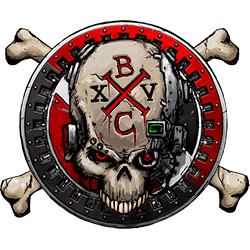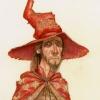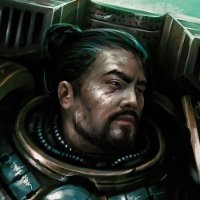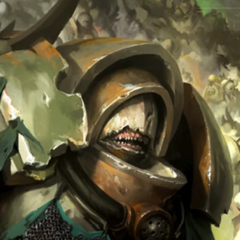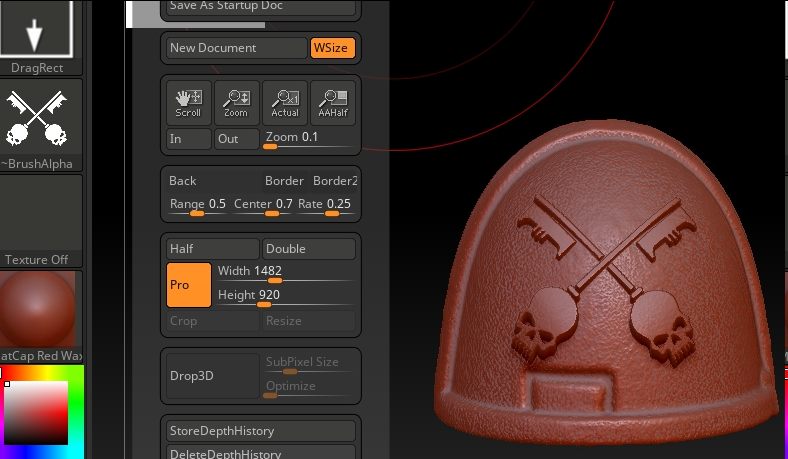-
Posts
1161 -
Joined
-
Last visited
About Minigiant

Profile Information
-
Faction
Prædicators
Previous Fields
-
Armies played
Tau, IG, SM
Recent Profile Visitors
Minigiant's Achievements
-
 40k_fan reacted to a post in a topic:
++Community DIY chapter - Gaol Wardens++
40k_fan reacted to a post in a topic:
++Community DIY chapter - Gaol Wardens++
-
 Gamiel reacted to a post in a topic:
++Community DIY chapter - Gaol Wardens++
Gamiel reacted to a post in a topic:
++Community DIY chapter - Gaol Wardens++
-
 Felix Antipodes reacted to a post in a topic:
++Community DIY chapter - Gaol Wardens++
Felix Antipodes reacted to a post in a topic:
++Community DIY chapter - Gaol Wardens++
-

++Community DIY chapter - Gaol Wardens++
Minigiant replied to Minigiant's topic in + LIBER ASTARTES +
-

++Community DIY chapter - Gaol Wardens++
Minigiant replied to Minigiant's topic in + LIBER ASTARTES +
I have just got back from my vacation so I will give this another impetus soon -
 Minigiant reacted to a post in a topic:
IA : Mercurial Lords
Minigiant reacted to a post in a topic:
IA : Mercurial Lords
-
 Gamiel reacted to a post in a topic:
++Community DIY chapter - Gaol Wardens++
Gamiel reacted to a post in a topic:
++Community DIY chapter - Gaol Wardens++
-

++Community DIY chapter - Gaol Wardens++
Minigiant replied to Minigiant's topic in + LIBER ASTARTES +
In envisioning the Gaol Wardens and their interaction with the Ordo Malleus, I see a multifaceted relationship that mirrors the complexities of the labyrinthine Administatrum. Their unique approach to daemon containment through daemonhosts brings forth intriguing dynamics that could shape our narratives in compelling ways. From my perspective, the Ordo Malleus perceives the Gaol Wardens as a specialized and valuable asset in our ongoing crusade against the daemon scourge. Their utilization of daemonhosts, while unconventional, presents an approach that yields results. However, I imagine that opinions within the Ordos ranks would span a spectrum. On the conservative end, there might be individuals who harbor concerns about the ethical implications of using daemonic entities, even for containment. This group could view the Gaol Wardens with caution, questioning the fine line between control and corruption. Conversely, the pragmatists among us would likely recognize the pragmatic value of the chapter's methods. In the face of a relentless tide of Chaos, such unorthodox measures could be deemed necessary, even if they tread along the edge of acceptability. For the radicals within the Ordo Malleus, I envision a different perspective altogether. These daring individuals might see the Gaol Wardens' mastery over daemonhosts as a source of untapped potential. Their unique approach could open doors to experimental strategies and audacious collaborations that challenge convention and push boundaries. Interaction Frequency: I imagine representatives of the Ordo Malleus and the Gaol Wardens working in tandem, their paths intertwining when critical daemon containment operations arise. This interaction could involve the transfer of high-value prisoners, strategic interrogation sessions, and even joint investigations into daemonic incursions. Balancing Assignments and Initiative: One avenue to explore is how the Gaol Wardens receive both direct assignments from the Ordo Malleus and operate with a degree of autonomy. This dual approach would enable them to act swiftly in the face of emerging threats while staying aligned with the overarching goals of the Inquisition. Dedicated Serfs and Administration: Picture a team of dedicated serfs meticulously managing communications, transmissions, and administrative tasks tied to the prison facilities. This logistical backbone ensures the seamless flow of information, allowing Gaol Wardens to respond promptly to both scheduled and unforeseen developments. Inquisitorial Representative: Consider the inclusion of an Inquisitorial representative among the Gaol Wardens serfs, a specialist in psychic powers such as mind blanking. This figure plays a vital role in maintaining the security of sensitive information and shielding against potential daemon influence. Strategic Use of Droids: An intriguing aspect could involve the Gaol Wardens' decision to entrust droids with prison maintenance, thus mitigating the risk of corruption. These droids' inability to record interactions and lack of psychic presence align well with the Inquisition's emphasis on secrecy. Assisting Inquisitors: Envision the Gaol Wardens stepping in to aid Inquisitors in capturing and containing powerful daemons beyond their individual capabilities. This not only showcases their willingness to cooperate but also highlights their unique skill set and resources. When considering the exchange of knowledge between the Ordo Malleus and the Gaol Wardens, I see the Librarians as conduits for this knowledge transfer. With their deep-rooted knowledge of the psychic and their connection to the Warp, Librarians would play a pivotal role in shaping operations. Their unique understanding of the psychic phenomena, including daemonic entities, could contribute vital perspectives to our endeavors. One way I see this dynamic unfolding is through the provision of specialized equipment. The Gaol Wardens, as custodians of daemonic containment, could already possess advanced tools within Oubliette's arsenal. However, the Ordo Malleus might offer additional training and insight into utilizing this equipment effectively. From psychic nullifying technology to weaponry engraved with arcane sigils, these enhancements could amplify the chapter's battlefield prowess. Moreover, the chapter could be entrusted with relics and artifacts purpose-built to combat daemonic forces. These items, blessed by holy rites or infused with anti-daemonic energies, could provide a potent edge against their unholy adversaries. This support could extend the Gaol Wardens' capabilities in a way that aligns seamlessly with their core mission. A particularly intriguing idea centers around the permission to escort Inquisitors to sanctified locations. Imagine the Gaol Wardens gaining access to enigmatic sites, repositories of ancient lore, or concealed chambers. These sanctified locations, made available through the Inquisition's influence, could contain critical insights into daemonology and strategic advantages against the Warp. I envision the Gaol Wardens not reporting to a specific Inquisitor or Inquisitorial representative directly. Instead, their main point of contact for high-level engagements could be a high-ranking Inquisitor who serves as a liaison between the chapter and the Inquisition. This arrangement would grant them a degree of independence in their decision-making while still fostering a crucial connection with the Inquisition. Due to their close proximity to the Inquisition, I see the Gaol Wardens exercising vigilant self-regulation. They understand the gravity of their mission and the potential consequences of corruption. This vigilance becomes a fundamental aspect of their chapter's ethos. The constant awareness of the thin line they tread between control and succumbing to the very forces they combat serves as a constant reminder of their duty and the need for unwavering dedication. This delicate balance between autonomy and collaboration, I believe, would significantly influence their decision-making and operations. Their self-imposed vigilance would translate into meticulous scrutiny of their actions and alliances. The absence of direct oversight from a single Inquisitorial figure could lead to the Gaol Wardens relying heavily on their own judgment, while seeking guidance from the high-ranking Inquisitor when necessary. -
 40k_fan reacted to a post in a topic:
The Weapons (and Tactics) of WH40K vs Realism
40k_fan reacted to a post in a topic:
The Weapons (and Tactics) of WH40K vs Realism
-

++Community DIY chapter - Gaol Wardens++
Minigiant replied to Minigiant's topic in + LIBER ASTARTES +
Gaol Wardens and Inquisitorial Relationship Purpose and Mutual Goals: How does the Ordo Malleus view the Gaol Wardens' unique approach to daemon containment and their use of daemonhosts? Are the Gaol Wardens seen as a specialized asset by the Ordo Malleus, contributing to the overall goal of combating daemonic threats? Collaboration and Interaction: How often do representatives of the Ordo Malleus interact with the Gaol Wardens? Do the Gaol Wardens receive direct assignments from the Ordo Malleus, or do they primarily operate on their own initiative? Intellectual Exchange: Is there a level of knowledge exchange between the Ordo Malleus and the Gaol Wardens? Do they share insights, research, or strategies? Could the Gaol Wardens' unique containment methods offer a fresh perspective on daemonic entities that benefits the Inquisition's work? Resources and Support: Does the Ordo Malleus provide the Gaol Wardens with resources, such as specialized equipment, information, or personnel? How do the Gaol Wardens respond to such support, and are there conditions attached to it? Inquisitorial Oversight: Do the Gaol Wardens report to a specific Inquisitor or Inquisitorial representative, or do they maintain a level of autonomy? How does this oversight (or lack thereof) affect the chapter's decision-making and operations? Recruitment and Allies: Are the Gaol Wardens allowed access to the Inquisition's network for potential recruits, or do they primarily recruit through their own methods? Could there be allies within the Inquisition who advocate for the Gaol Wardens and facilitate their interactions? Mystique and Secrecy: Does the Ordo Malleus fully understand the nature of Oubliette and its arcane containment methods, or is it intentionally shrouded in mystery? How does this mystique affect the Gaol Wardens' relationship with the Inquisition? Conflicts and Tensions: Are there potential conflicts between the chapter's methods and the established doctrine of the Ordo Malleus? Could ideological differences or disagreements arise between individual Inquisitors and the Gaol Wardens? Long-Term Implications: How has the Gaol Wardens' relationship with the Ordo Malleus shaped their identity, traditions, and role within the Imperium? Are there potential future developments that could strain or strengthen this relationship? -

++Community DIY chapter - Gaol Wardens++
Minigiant replied to Minigiant's topic in + LIBER ASTARTES +
I've had another intriguing idea regarding Oubliette that I'd like to share with the community: Imagine a scenario where when a Daemonhunter arrives at Oubliette, seeking the containment of a particularly dangerous daemonic entity, they come bearing a unique form of payment: potential recruits they've encountered on their arduous journeys. These potential recruits could be individuals who have displayed exceptional qualities or unique skills in their struggles against the forces of Chaos. Recognizing the Gaol Wardens' expertise in dealing with daemons, the Daemonhunters offer these individuals to the chapter, knowing that they could be trained to become formidable Space Marines.This dynamic interaction between the Gaol Wardens and the Inquisition emphasizes the mutual benefits gained from their collaboration. The chapter gains recruits of exceptional merit, while the Inquisition gains a dedicated force capable of containing and countering the most insidious daemonic threats. Furthermore, this practice underlines the notion that every action, no matter how localized, can have far-reaching consequences and influence the fate of individuals across the Imperium. -
I commend you on the discussion surrounding the feasibility of weapons from the 40k universe in real-world contexts, these types of discussions are always interesting in theory. Your analysis of bolters, plasma weapons, and laser technology showcases an understanding of both the lore and some of the scientific principles involved. Your breakdown of bolters as akin to automatic shotguns with gyrojet-style projectiles highlights the potential practicality of such weaponry. It's intriguing to envision these firearms being utilized by regular individuals with proficiency, even though they may carry a touch of gimmickry. Your thoughts on the potential accuracy issues resulting from rocket deformations provide an additional layer of intrigue. The examination of plasma weapons also resonates. Your explanation of the need for an exorbitant amount of energy to produce the explosive plasma effects adds a sense of authenticity to their portrayal. The considerations around energy backpacks and the risks associated with using plasma weaponry offer a unique perspective on the possible drawbacks of this technology. Your insights into laser weapons are equally interesting. The comparison to the US Navy's laser cannon and its energy requirements paints a vivid picture of the challenges involved. The notion that lasers might excel in space battles due to their speed and recoil-less nature is intriguing, emphasizing their potential strategic advantage. The limitations you've pointed out, such as the inability to arc and their vulnerability to environmental factors, contribute to a well-rounded understanding of laser weaponry. The detailed explanation of antimatter weaponry and its challenges in creating, containing, and utilizing antimatter effectively underscores the complexity of such weaponry. The potential for immense power and destruction, albeit at significant logistical costs, adds depth to the discussion of antimatter's role in the 40k universe. I would argue though that it is precisely the unrealistic aspects of these weapons that fit them seamlessly into the 40k lore. The essence of the 40k universe lies in its over-the-top nature, where exaggeration and absurdity are celebrated virtues.
-
 Xin Ceithan reacted to a post in a topic:
++Community DIY chapter - Gaol Wardens++
Xin Ceithan reacted to a post in a topic:
++Community DIY chapter - Gaol Wardens++
-
 Xin Ceithan reacted to a post in a topic:
++Community DIY chapter - Gaol Wardens++
Xin Ceithan reacted to a post in a topic:
++Community DIY chapter - Gaol Wardens++
-
 Felix Antipodes reacted to a post in a topic:
++Community DIY chapter - Gaol Wardens++
Felix Antipodes reacted to a post in a topic:
++Community DIY chapter - Gaol Wardens++
-
I extend my greetings to the Mercurial Lords as they step into the halls of The Liber. Your contribution to the Index Astartes is received with great anticipation, and I, along with our esteemed readers, am eager to delve into the history and exploits of your Chapter. As I perused your initial draft, a thought emerged regarding the nomenclature. It's true that the moniker "Lords" might lead to ambiguity considering the intricate hierarchy of the Adeptus Astartes and the involvement of the High Lords of Terra. Perhaps adopting the full title "Mercurial Lords" throughout your account could help eliminate any potential confusion, allowing readers to immerse themselves more deeply in your Chapter's unique narrative. I concur that the grim darkness of the Warhammer 40,000 universe often leans towards a more visceral and unrelenting portrayal. The phrase "but perhaps inefficient sector, step in to govern it, and then spread that stability to the regions around it, and from those regions to those that followed" might indeed come across as overly pragmatic and subtle, whereas the Imperium and its Astartes typically engage in actions with a greater degree of overt force and sacrifice. In this age of unending war and unforgiving darkness, the Imperium's approach is often marked by brutal necessity rather than strategic finesse. Chapters are known to embark on campaigns of unrelenting fury, descending upon their enemies like vengeful angels of death, their actions driven by the uncompromising ideals of the Emperor. Consider rephrasing this portion to reflect a more direct and unapologetic tone, one that resonates with the unyielding spirit of the Adeptus Astartes. For instance, you could emphasize their willingness to seize control of a sector, crush opposition with unwavering might, and ensure Imperial dominance is unchallenged. This would align your narrative more closely with the established atmosphere of the Warhammer 40,000 universe, where strength and determination are often the guiding principles.
-
 Gamiel reacted to a post in a topic:
++Community DIY chapter - Gaol Wardens++
Gamiel reacted to a post in a topic:
++Community DIY chapter - Gaol Wardens++
-

++Community DIY chapter - Gaol Wardens++
Minigiant replied to Minigiant's topic in + LIBER ASTARTES +
I fully support @Felix Antipodesnotion of placing Oubliette within the Segmentum Tempestus, specifically in the Caligari sector. This setting offers two intriguing threads for the chapter's operations, first it aligns them with the legacy of the Caligari Conclave and its intricate interplay with the Warp, and secondly it is where Tiberius' known story was situated. Then the idea of Oubliette being an ancient artifact with a history of containing daemonic entities captivates me. I Imagine the Gaol Wardens initially striving to regain control over this powerful relic. The struggle to reclaim their own fortress, coupled with their unique daemon-containment methods, adds layers of depth to the chapter's story. This approach breathes life into the very foundations of the Gaol Wardens, shaping their identity through their interactions with the enigmatic Oubliette. Additionally, I propose the notion of situating Oubliette in orbit around a Penal World. The idea that the Penal World unknowingly sends their worst prisoners to Oubliette, only for them to be transformed into daemonhosts, intertwines the fates of the chapter and the Penal World in unexpected ways. The family connections to the prison wardens of the Penal World becoming a recruitment source is a clever touch, weaving personal stories and relationships into the Gaol Wardens' narrative. -

++Community DIY chapter - Gaol Wardens++
Minigiant replied to Minigiant's topic in + LIBER ASTARTES +
The winner: As I will use my vote to determine ties, that makes Option 2 the winner. This answers some of @Codex Greyquestion In that a prison dedicated to capturing daemons would make the Inquisitiorial involvement be from the Ordo Malleus. This now should allow us to determine what is the origin of Oubliette? I have some ideas but a little busy this week so will share them later when I can. -
 Xin Ceithan reacted to a post in a topic:
++Community DIY chapter - Gaol Wardens++
Xin Ceithan reacted to a post in a topic:
++Community DIY chapter - Gaol Wardens++
-

++Community DIY chapter - Gaol Wardens++
Minigiant replied to Minigiant's topic in + LIBER ASTARTES +
I will give it till Wednesday for fairness but here is my answer to this question and keep some momentum alive: My vote goes to Option 2: Oubliette incarcerates any and all high-value Inquisitorial targets brought to them. I believe this option holds great narrative potential and opens the door to exploring various aspects of the Warhammer 40,000 universe in a rich and engaging manner. 1. Diverse Exploration of Inquisitorial Branches: Opting for Option 2 allows us to delve into the intricate web of the Inquisition itself. The Inquisition encompasses a multitude of branches, each with its own methods, ideologies, and goals. By welcoming high-value Inquisitorial targets, the Gaol Wardens would interact with various facets of the Inquisition, from Radical to Puritan, from Hereticus to Malleus. This interaction presents opportunities to explore the complex interplay between these branches, showcasing the Imperium's multifaceted nature. 2. Dynamic Prisoner Population: One of the most intriguing aspects of Option 2 is the adaptability it provides. As high-value Inquisitorial targets are brought to Oubliette for containment, the prison's inmate population becomes dynamic and diverse. Over time, some prisoners may lose their perceived value, and as a result, the Gaol Wardens might harness their abilities by employing them as daemonhosts. This shifting population offers a fertile ground for intricate plotlines, as the Wardens navigate the challenges posed by both incarcerated individuals and contained daemons. 3. Multifaceted Prison Wings: I'm captivated by the idea of Oubliette housing different "prison wings," each dedicated to holding distinct types of prisoners. The concept of the "Infernal Annex" as the darkest and most mysterious wing is particularly alluring. This approach not only reinforces the chapter's enigmatic nature but also provides us with a canvas to paint various shades of the 40k universe - from political intrigue to daemonology. By selecting Option 2, we're embracing the intricate complexity of the setting. We're unearthing hidden aspects of the Inquisition and weaving them into the tapestry of the Gaol Wardens' narrative. This choice sets the stage of what I consider the core essence of the chapter's mission: to be vigilant guardians against the ever-present threats of Chaos. -
Lance Encarmine Introduction Within the vast arsenal of the Warhammer 40,000 universe, the Matadors Sanguinary Guard Lance Encarmine stand as a testament to the awe-inspiring weaponry wielded by the noble Matadors Chapter of the Adeptus Astartes. Developed as a variant of the revered Blood Angels Sanguinary Guard Glaives Encarmine, these lances embody the Chapter's commitment to elegance, precision, and devastating close-quarters combat. Lore and Background The origins of the Matadors Sanguinary Guard Lance Encarmine can be traced back to the esteemed Blood Angels Chapter, known for their fierce devotion to the Emperor and the constant struggle against the encroaching darkness. As successors of this noble lineage, the Matadors have inherited the sacred duty of protecting humanity and upholding the ideals of justice and purity. The Lance Encarmine hold a significant place within the Matadors' culture and combat doctrine. Passed down through generations, these revered weapons are regarded as symbols of the Chapter's unwavering resolve and dedication to the Emperor. They are said to embody the fiery essence of their Primarch, whose blood still courses through the veins of the Chapter's warriors. Design and Function The Matadors Sanguinary Guard Lance Encarmine feature a sleek and lethal design that perfectly balances elegance and lethality. Crafted with the utmost precision by the Chapter's skilled artisans and master craftsmen, these lances are infused with sacred oils and blessings, enhancing their already formidable power. Each lance consists of a shaft made from sturdy ceramite or adamantium, meticulously etched with intricate patterns and embellishments that reflect the Chapter's noble heritage. At the tip, a bladed head forged from a rare adamantine alloy or infused with crystalline shards exudes a pulsating aura of blood-red energy. Tactical Application The Matadors Sanguinary Guard Lance Encarmine excel in close-quarters combat, their design perfectly suited for swift and devastating strikes. In battle, the Sanguinary Guard, adorned in their ornate and revered armor, brandish these lances with unmatched grace and precision. The lances possess incredible destructive power, capable of rending through even the most formidable foes. With each swing and thrust, they unleash a torrent of energy that bathes the battlefield in a shimmering cascade of crimson light. The Lance Encarmines' inherent close-quarters capabilities make them ideal for engagements within the tight confines of boarding actions, ship-to-ship combat, or assaulting fortified enemy positions. Variants and Modifications Though the Matadors Sanguinary Guard Lance Encarmine primarily adhere to a standard design, there are notable variations and modifications that have emerged over time. Some lances feature additional enhancements such as built-in power fields or disruption fields, further amplifying their destructive potential or granting additional defensive capabilities. These modifications are often tailored to the preferences and combat style of specific Sanguinary Guard champions. Legendary Heroes and Stories Throughout the Matadors' illustrious history, there have been countless tales of legendary heroes wielding the Sanguinary Guard Encarmine Lances. One such hero is Seraphim Valerius, a renowned Sanguinary Priest who led the charge during the crucial Battle of Obsidian Gate. With his Lance Encarmine held high, Seraphim carved a path through hordes of traitorous enemies, inspiring his brethren to achieve a resounding victory against overwhelming odds. Conclusion In conclusion, the Matadors Sanguinary Guard Lance Encarmine symbolize the Chapter's dedication to the Emperor and their pursuit of martial excellence. With their exquisite design, devastating power, and the heroic deeds of their wielders, these lances have become an indomitable force on the battlefield. As you delve further into the Index Armorium, may this glimpse into the Matadors Sanguinary Guard Lance Encarmine inspire you to explore the rich tapestry of weaponry and wargear that shapes the fate of the Warhammer 40,000 universe. Arm yourself with knowledge and prepare to forge your own legends amidst the unending horrors of the 41st Millennium.
- 33 replies
-
- Minigiant
- Blood Angels
-
(and 4 more)
Tagged with:
-

++Community DIY chapter - Gaol Wardens++
Minigiant replied to Minigiant's topic in + LIBER ASTARTES +
I think you are right. Another written poll it is. @40k_fan@Felix Antipodes@Codex Grey@Xin Ceithan Let me know your thoughts: Option 1: Oubliette should solely incarcerate daemons in the form of daemonhosts Option 2: Oubliette incarcerates any and all high value Inquisitorial targets bought to them -

++Community DIY chapter - Gaol Wardens++
Minigiant replied to Minigiant's topic in + LIBER ASTARTES +
I understand your perspective. Collaborative projects however benefit from a more focused and structured approach. While exploring various aspects like visuals can lead to interesting insights, we need to ensure that our efforts remain streamlined to effectively build a cohesive whole. My methodology is well-considered and promising. Trust in this approach and it will help us navigate through the different stages of crafting the Gaol Wardens' story. By keeping our focus aligned, we can work more efficiently toward defining the core aspects that will give the chapter its unique identity. I'm committed to making this collaboration a success, and I share your dedication in achieving that goal. _________________________________________________________________________________________________________________________________________________________________________________ @Daimyo-Phaeron Lenoch We need another poll please. Option 1: Oubliette should solely incarcerate daemons in the form of daemonhosts Option 2: Oubliette incarcerates any and all high value Inquisitorial targets bought to them -

++Community DIY chapter - Gaol Wardens++
Minigiant replied to Minigiant's topic in + LIBER ASTARTES +
You're absolutely right that names are a crucial aspect of defining the character and identity of a chapter. While I'm not against the idea of the Gaol Wardens having names and fully understand your concerns regarding the potential confusion in communication due to repetitive titles. I do believe that we can craft the Index Astartes article in a way that maintains the focus on their unique concepts and characteristics, without necessarily diving into the specifics of individual names. It's true that skillfully incorporating names can enhance the tone and atmosphere of the chapter, but I also agree that it shouldn't be our top priority at this stage. Let's concentrate on establishing the core elements of the chapter, its history, culture, and defining features, and then we can explore how to seamlessly integrate names or not to further enrich the narrative. Regarding the color scheme and markings, the discussions are fascinating, and it's clear that each proposed scheme has its merits. However, it is my sentiment that we should be cautious not to rush into these details too quickly. The foundation of the chapter's character and its core concepts should take precedence. These aesthetic elements can certainly be refined later through polls or competitions. Credit must be given to @Codex Greybefore I move on, who refined my initial chapter symbol expertly. Your insights about the implications of wearing chains on the armor are thought-provoking. As we continue to develop the chapter's background, I'm sure we'll find exciting ways to address these ancestral connections and potential origins. That being said, I believe it's time to address a crucial aspect of the chapter's focus. The debate over whether the Gaol Wardens primarily imprison daemons or a broader range of threats raised an important point. To move forward cohesively, I propose we conduct another poll to determine the chapter's primary imprisonment focus. This decision will have a significant impact on the nature of Oubliette and the chapter's overarching purpose. Let's ensure we're united in this key aspect before delving deeper into other facets. -
You may have better luck and better feedback in the Homegrown Rules section for this part specifically.
